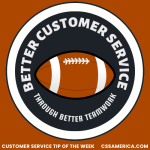Jerry Brown is all about Student Success…or is he?
In late September, California Governor Jerry Brown signed the Student Success Act of 2012. According to a press release from the California Community Colleges Chancellor’s Office, there are four major provisions:
- Target “existing student services resources to support orientation, assessment and education planning services and lays the groundwork to expand these services as more resources become available.”
- “Utilize a statewide system of common assessment once available, to improve consistency and efficiency within the 112-campus system.”
- “Require colleges…to post a student success scorecard to clearly communicate progress in improving completion rates for all students and closing the achievement gap.”
- “Require students whose fees are waived because of their economic need to meet minimum academic standards.”
If we wanted to break these down such that they apply to any college, the focus is on:
- Ensuring first year students have a plan, knowledge, and comfort level to be successful.
- More consistently assessing students.
- Posting college performance metrics.
- Expecting performance from students receiving funding.
The good of this Act is that it focuses on upfront orientation/education, transparency, competitiveness, consistency, and accountability.
The main negative is that it only does one thing that promotes Student Success – that upfront orientation and planning. That’s not necessarily a shortcoming of the Act, but it’s the reality of Student Success. Government cannot mandate or create Student Success. They can try to influence it with regulations, bills, or funding. But it’s up to the college and the student to create the Success.
And that Student Success relies on an organization truly understanding what helps each unique student to complete their education. That solution is unique to each college and each student.
So colleges may embrace these types of legislation, but the real results come from the internal process, cultural, programmatic, structural, and relationship-oriented changes that the colleges undertake.
Don’t blame or give too much credit to government for Student Success. It takes a college and its students moving toward the same goals to truly create Student Success.
Read our New Book – “Ask Yourself…Am I GREAT at Customer Service?” http://www.amigreatat.com/
Listen to our latest podcast episode of “Stepping Up Service” on The MESH Network at http://themesh.tv/stepping-up-service/
Interested in improving your company’s customer service? See more at our new website! http://www.cssamerica.com/





















